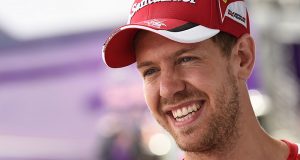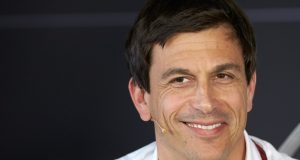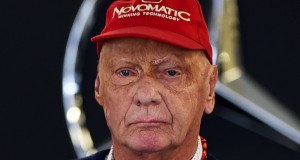 The Renault F1 Team looks ahead to this weekend’s Australian Grand Prix in Melbourne.
The Renault F1 Team looks ahead to this weekend’s Australian Grand Prix in Melbourne.
Robert Kubica: “I hope we can achieve the car’s full potential”
Robert, what more have you learned about where the team stands after the race in Bahrain?
We had a very intense winter working hard to understand and improve the car, so it was nice to finally be able to compare where we stand. I still want a couple more races to really judge the situation, because Bahrain is a slightly unusual circuit in some aspects, but I’m feeling very positive. We didn’t achieve our full potential in qualifying or the race, for different reasons, but seventh position was realistic in both cases. It was disappointing not to achieve that, but encouraging to know that we had the possibility of doing it.
You talked about the car’s potential – what are your thoughts on the R30 now?
The weekend in Bahrain basically confirmed the feelings I had in Valencia at the first test, in terms of where the car is strong and where we can still improve. The car has a lot of strengths and we are working hard to get even better in what we do well, and improve in the areas where we are less strong. The race this year is not just at the track, but also in the factory to deliver new developments. The team at Enstone has been working 24/7 to produce updates and the first results in Bahrain gave a good step forward in performance.
The racing in Bahrain came in for a lot of criticism. What was it like from the cockpit to race without refuelling?
Especially at the beginning, it felt like the race was happening in slow motion compared to last year because we had so much fuel onboard and the lap times were so much slower. It was interesting to see how the different teams reacted to the challenge: we set a benchmark for the strategy by stopping very early for new tyres, and we saw the other cars that started on the softer tyre all came into the pits two or three laps after us. We now only have three sets of tyres to use in Friday practice, and the running time is quite limited, so you can’t develop such a good understanding of the differences between the two compounds. Teams will have to be very reactive to how the tyres are behaving in race conditions, and they’ll need to adapt their strategies quickly.
How will the R30 cope with the demands of the Melbourne circuit?
Overall, before the start of the season, I had the feeling that Melbourne would be a better circuit for us than Bahrain. Now that we have seen the other cars running and collected more information about where we stand, I think even more that it will be a good circuit for us. The circuit is very low grip at the start of the weekend, and you need good mechanical grip, braking stability and ride, so I hope we can put in a strong performance and achieve the car’s full potential.
Vitaly Petrov: “My goal is to get closer and closer to the top ten”
Vitaly, how did you evaluate your first weekend in F1?
Apart from the final result, I was very pleased with the weekend and it was all pretty straightforward. I made one mistake in qualifying, which meant I didn’t start as high up the grid as I could have done, but I made up for that at the start by climbing up to P11. The team helped me a lot over the weekend, and we did a good job with the engineers and mechanics to find the right set-up. The car felt fantastic on Sunday and that makes me very positive for the next races.
You seemed to take everything in your stride – is that in your character?
I prefer to take everything calmly. I’ve been racing a long time and, although F1 is tougher than any other series, it’s still about doing the best job you can in the car. I was not worried before the race, but I felt much better after doing my first start, making up places on the opening lap and really fighting with the cars around me. My goal now has to be to get closer and closer to the top ten without making any more mistakes.
What has been the reaction in Russia to your first race?
So far, the support in Russia has been fantastic. Formula 1 is still something new for my country, so people are learning about it all the time and discovering all the different aspects of the sport. There has been a lot of excitement, and many messages of support, so I have to say a big thank you to all the fans over there. When I get in the car, though, I am focused on the job. It’s a great boost to have my people behind me, but it doesn’t feel like extra pressure on my shoulders.
How will you approach the challenge of learning a new track in Australia?
The most important thing is to learn the track and understand how it flows. I need to get out there and feel the tarmac, see the kerbs, walk a lap to have the right feeling for what I need to do. Then I will do the best job I can and we’ll see what happens.
Alan Permane: “The R30 should perform well in Melbourne”
The Chief Race Engineer reflects on Bahrain and reveals his hopes for Melbourne.
Alan, what did we learn about the R30 in race one?
Bahrain was obviously the first time the R30 had run in hot temperatures so it was good to see that this didn’t pose any problems for the car or our systems. We also learnt a lot more about the tyres: how to use them and how to look after them during long runs. Completing the race with Robert also gives us a lot more data and understanding of how the car behaves over a race distance as the fuel load comes down.
Where is the team focussing its efforts to improve performance?
We’re looking at all areas, but it’s no secret that downforce still rules in F1 and the more downforce we can put on the car, the better. We’re also looking at addressing some of our weaknesses on the mechanical side, but that’s a longer term project and it will be a few races before we can integrate suspension updates.
How did Vitaly settle into the team over his first weekend and were you happy with his performance?
Vitaly didn’t have the best winter because he was unlucky with the weather during testing, which meant his first race was an especially steep learning curve. He had a lot to get used to and, although his race was short, he can be very proud of his performance. He made an excellent start jumping up from 17th to 11th and showed good pace in the early laps until we had a problem with the suspension. When he got out of the car he was understandably disappointed, but he still had a big smile on his face. His performance in Bahrain will definitely boost his confidence ahead of this weekend.
What about Robert’s first race with the team?
It was such a shame that he got hit on the opening lap because it completely destroyed his race. He did a very credible job to fight back to eleventh in the middle part of the race and his pace was very competitive – as quick as the two Mercedes and the McLaren of Button. It’s clear that we’re not in the same league as Ferrari and Red Bull at the moment, but the performance in Bahrain gives me confidence that we can challenge for some good points this year.
Tell us about the challenge of Albert Park and the key to a good set-up?
It’s a track where you need good braking stability because it’s very bumpy in the braking zones. You also need good traction because the lap is mostly made up of second and third gear chicanes where a good change of direction is important. In the final part of the lap the car wants to understeer, especially through the final corner onto the pit straight, so you need a good front end to cope with this.
What upgrades are planned for this weekend?
We have some new aero parts for Melbourne, which should give us a bit more performance. There’s a new front wing and a new part on the rear wing, which improves our overall downforce.
Will the circuit suit the car?
I think it will because Albert Park is a bumpy track and our car rides the bumps well. We saw that in Bahrain where Robert and Vitaly were very competitive in the new section of track, which was very bumpy.
What are your targets for the weekend?
The target is to get both drivers into Q3. I think that’s a realistic target given our competitiveness. If we can do that then both drivers should be capable of fighting for points.
Track Talk with Robert Kubica
Robert talks us through the demands of racing on the streets of Melbourne.
I like street circuits in general so Albert Park is one of my favourite tracks. It’s also one of the best weekends of the year because the city really supports the race, which helps create a special atmosphere. I don’t usually have a problem with jet lag, but I always fly out a bit earlier than I do for European races to make sure I feel totally fresh for the weekend.
It’s quite a demanding circuit because the track conditions are constantly changing across the weekend. On Friday the track is very green so you have to leave some safety margin because it’s easy to run wide and end up in the wall. You can go quicker and quicker with each run as the track rubbers in and by the end of practice your lap times can be as much as six seconds quicker than at the start of the session.
The grip levels are quite poor, so the set-up priority is to work on drivability so that the car gives you confidence. The streets are also quite bumpy, especially the first chicane and the entrance to turn six, so braking stability is important. You also need a car that can ride the curbs well so that you can carry good speed through the medium speed corners.
Overtaking isn’t easy because it’s so dirty off line. The best chance is into turn three if the car ahead of you gets a bad exit from the first chicane. Turn 13 is another opportunity, but because turn 12 is such a quick corner it’s hard to follow another car closely onto the straight before 13. Again you’re relying on the car ahead of you getting a bad exit.
Turns 11 and 12 are the quickest corners of the lap. There are a few ways of approaching this high-speed chicane, but as always the secret is to carry as much speed as possible and not run too wide on the exit of 12. You need to use the curbs, but if you hit them too hard it upsets the car’s balance and hurts your speed. Get it right and you can find a lot of time; get it wrong and your lap time will really suffer.
Keeping brakes cool
When the refuelling ban was first announced for 2010, one of the main concerns was how to make sure brakes could last a Grand Prix distance. A full tank of fuel adds around 150 kg of weight to the car, and it requires considerably more energy to slow down that extra weight. It seemed that the brakes would be in for a tough time in 2010.
However, following the Bahrain Grand Prix there were hardly any complaints at all. Renault’s Chief Engineer, Alan Permane, even declared that the brake wear on the R30 was less than on the R29 during the 2009 race. “The guys in the factory have done a fantastic job with our braking solution,” he said. “The race was a breeze for the brakes.”
So what’s been done to make this possible? Well, there have been no changes to the actual discs because the regulations remain unchanged and only allow a maximum thickness of 28mm. A materials development programme has been conducted to improve longevity, but making the brakes last the distance all comes down to proper cooling, as Head of Performance Systems Group, Nick Chester, explains:
“We did a lot of simulation work to understand the extra demands on brakes, which confirmed that there would be 10% more energy going through the brake system this year. That gave us an idea of the cooling requirements needed from our brake ducts to keep the disc temperatures in a comfortable operating window.”
Controlling disc temperatures really is the key to good brake management because wear is determined by temperature. But it’s a non-linear relationship and wear rates jump steeply once the discs get above 600°C. So the brake ducts need to keep temperatures somewhere between 500°C and 600°C across the race distance.
“The job of the brakes ducts this year is even more important,” explains Nick. “Our designs have been done primarily using CFD (Computational Fluid Dynamics) and we’re getting a lot more air through the system compared with last year. It’s not just the size of the entrance to the duct that’s important, but the path the air takes through the upright, the disc and out of the disc vent, which determines how much air is in the system and the efficiency of the cooling. The positive results from Bahrain suggest we are well prepared for all the circuits this year.”
Like any part of the car, the brake ducts remain under constant scrutiny because they also have a significant impact on the car’s aerodynamic performance. “We have more developments planned for the ducts across the year,” says Nick. “Some of the tracks that are not so tough on brake wear will allow us to focus less on cooling so that the ducts can add a bit more downforce to the car.”
Courtesy Renault F1 Team © RIF
 Racing In Focus Motorsport and Events Coverage | Racing News, Results, Photos.. from Formula 1, American Le Mans, NASCAR, IndyCar and Canadian racing
Racing In Focus Motorsport and Events Coverage | Racing News, Results, Photos.. from Formula 1, American Le Mans, NASCAR, IndyCar and Canadian racing



